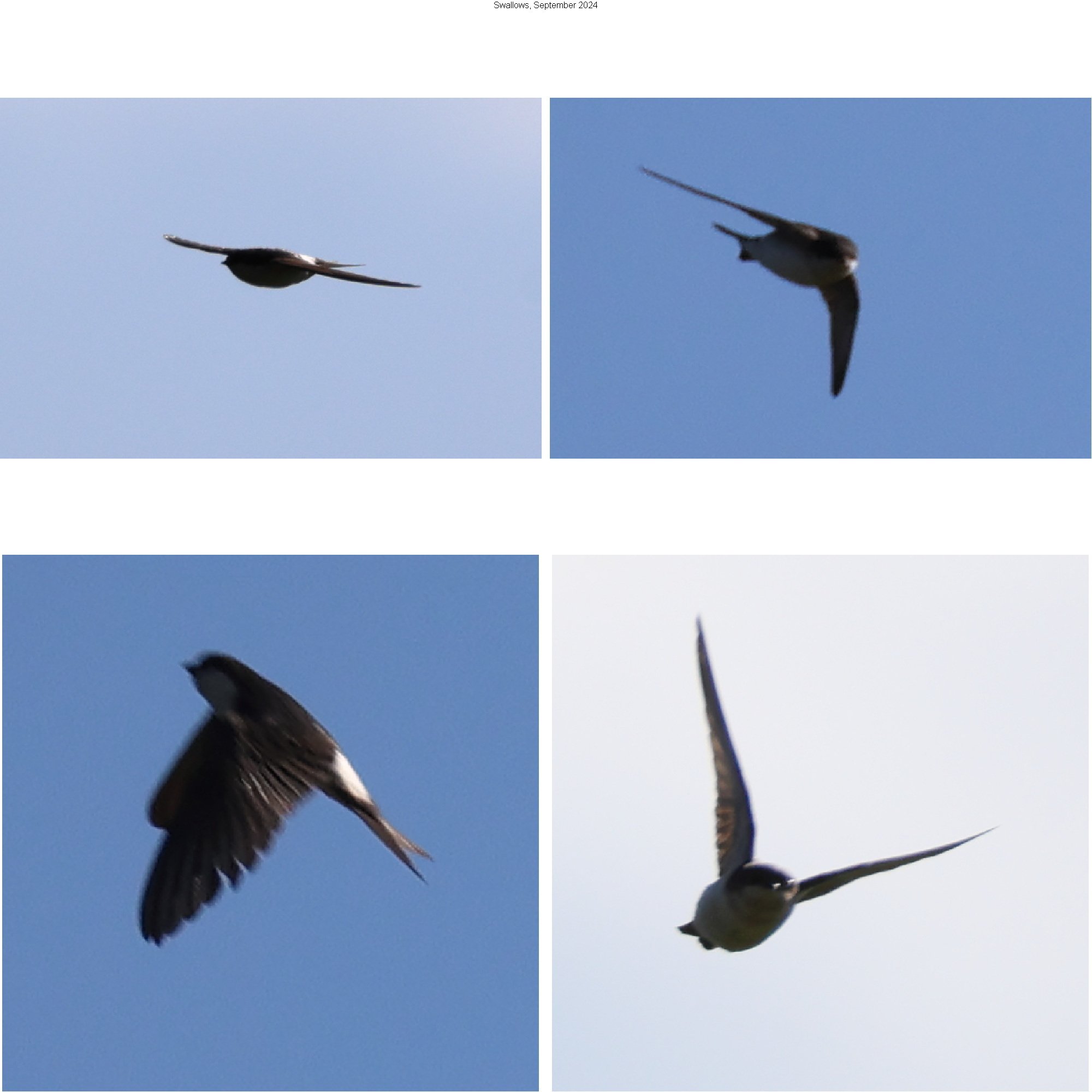They're loads of fun to watch. Surprised you could get these photos at all.
birding
A community for people who like birds, birdwatching and birding in general!
Feel free to share your photos and other birding-related content here. If a photo you post isn't yours, please credit the original creator! Additionally, it would be appreciated if the location of the sighting and a date were given when a photo or question is posted. You do not have to give the precise location, something like "Northern Idaho, June 2023" or even "North-Western US, June 2023" suffices.
I think what's happening is the long focal length allowing distant shots is giving a much greater depth of being in focus, combined with decent sunlight, and often trees in the full frame that are the right sort of distance way (these are massively cropped down from the full frames). This gives a better chance of the auto-focus getting it right. Also, swallows do have slower glide phases in their flight which can help to get on target. What I was forgetting is to try burst shooting to up my chances.
Does burst have any negative effects on the quality?
Not that I'm aware of - just eats storage and battery! That said, with a heavy camera, you're unlikely to keep it firmly on target for much of the burst!
Nice shots!
For tac sharp photos you need a much faster shutter speed for these erratic guys, at least 1/2000, possibly even faster.
If you try shooting them again maybe up your ISO a little in favor of your shutter speed.
Since the swallows were back in roughly the same place, and same (decent) light today, I tried with 1/2000s - and got a couple of shots that were clear improvements. E.g.

So, Canon R6 + RF200-800mm lens at full length, F9, ISO 1250, Exposure bias on camera +1 step at the suggested 1/2000s
To give a sense of cropping/distance, that's 296 x 296 pixels from a camera whose full frame is 5472 x 3648
Trying for the photos hand held for twenty minutes or so (with rests) left me with extremely tired arms!
I'll second this, I think it's impressive that you were able to get any sort of photo. I am decidedly not a birder, but I've tried taking long distance pictures of moving objects with a fairly extreme telephoto lens and I was dreadful at it. I'm even more amazed that you weren't using burst mode.
I was going to ask what your aperture was, but I'm guessing it's f/11 after looking up the lens. Canon made a crazy thing! I like it, and I hope other manufacturers take note. I'd especially like it if Sigma or Tamron made a compact 800mm prime lens.
This is actually the truly crazy (and heavy!) RF200-800mm, with F9 at 800mm (and they do one even madder at x4 the price or so).
Sadly, Canon don't let others use their RF interfaces, so I'd guess Sigma, etc. don't try hard to work with Canon anymore.
I know for birds the ideal is closer to the suggested 1/2000s, but in practice that seems out of reach without doing bad things to the ISO with this lens/body. While the camera was doing auto-ISO to 100-350, the photos needed quite a bit of increased brightness when processing (RAW of course) to bring out the bird, so there was little to spare. And this, in sunshine. If I'd been thinking, some exposure compensation on the camera would have been sensible, but I doubt the end result would be much better.
